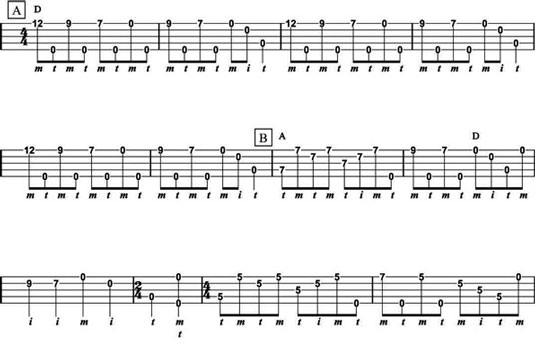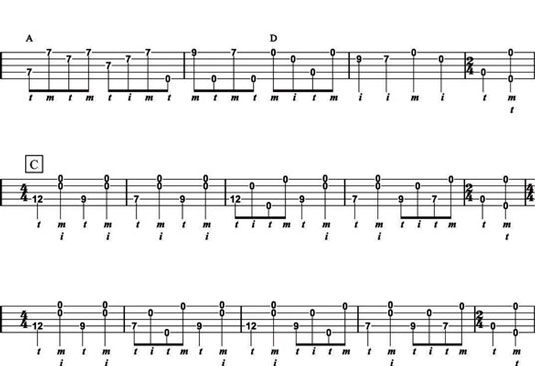The banjo classic “Coal Creek March” is usually played in D tuning, where the banjo is tuned to the pitches of a D major chord. This tuning is also used by bluegrass players, so it's definitely worth checking out.
Like Dock Boggs, Kentucky and Ohio banjo player Pete Steele worked in the coal mines. His classic “Coal Creek March” was recorded in 1938 by folklorist Alan Lomax and has been an old-time fingerpicking standard ever since. It should come as no surprise that you need to put your banjo in yet another new tuning. Here's a step-by-step guide with your banjo already in G tuning:
Tune the 2nd string down two frets from B to A.
Tune the 3rd string down one fret from G to F♯.
Tune the 5th string down one fret from G to F♯.
The 1st and 4th strings are the same as in G tuning. Here's how all of your strings should be tuned for D tuning:
5th string: F♯ (one fret down from G)
4th string: D
3rd string: F♯ (one fret down from G)
2nd string: A (two frets down from B)
1st string: D
As recorded by Pete Steele, “Coal Creek March” has an unusual pattern of repetition. Taking a look at the tab, you see that the tune's three sections are labeled with the letters A, B, and C.
To play the tune once through completely in the way that Pete usually performs it, you want to play the piece in this order: A–B–C–B. Don't forget to check out the audio track "Coal Creek March" from Pete Steele and the video clip Old-Time Banjo: D Tuning and "Coal Creek March" to watch this great piece!



